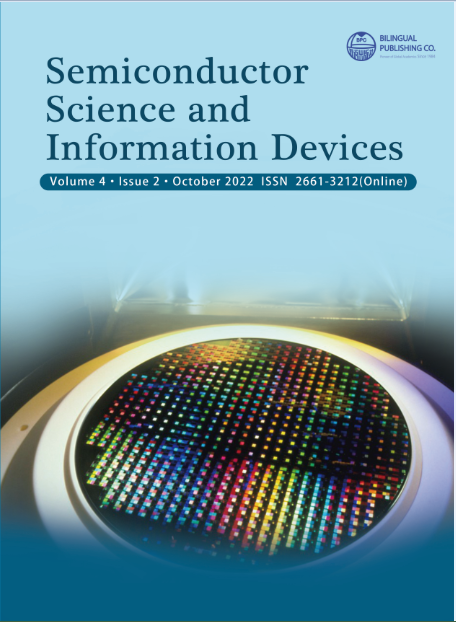Convection Heat Transfer from Heated Thin Cylinders Inside a Ventilated Enclosure
DOI:
https://doi.org/10.30564/ssid.v4i2.4719Abstract
Experimental study was conducted to determine the effect of velocity of axial fan, outlet vent height, position, area, and aspect ratio (h/w) of ventilated enclosure on convection heat transfer. Rectangular wooden ventilated enclosure having top and front transparent wall was made up of Perspex for visualization, and internal physical dimensions of box were 200 mm × 200 mm × 400 mm. Inlet vent was at bottom while outlet vents were at the side and top wall. Electrically heated cylindrical heat source having 6.1 slenderness ratio was fabricated and hanged at the centre of the enclosure. To calculate heat transfer rates, thermocouples were attached to the inner surface of heat source with silica gel. Heat source was operated at constant heat flux in order to quantify the effect of velocity of air on heat transfer. It was observed that average Nusselt number was increased from 68 to 216 by changing velocity from 0 to 3.34 m/s at constant modified Grashof number i.e. 5.67E+09. While variation in outlet height at the front wall did not affect heat transfer in forced convection region. However, Nusselt number decreased to 5% by changing the outlet position from top to the front wall or by 50% reduction in outlet area during forced convection. Mean rise in temperature of enclosure increased from 8.19 K to 9.40 K by increasing aspect ratio of enclosure from 1.5 to 2 by operating heat source at constant heat flux i.e. 541.20 w/m2.
Keywords:
Experimentation; Ventilated enclosures; Convection heat transfer; Dimensionless dataReferences
[1] Mangesh, D.S., Mahalle, A.M., 2013. Cooling of Electronic Equiments with Heat Sink: A review of Literature. IOSR Journal of Mechanical and Civil Engineering (IOSR-JMCE). 5(2), 56-61.
[2] Riaz, A., Ibrahim, A., Basit, A., et al., 2017. Numerical Simulation of Naturally Air Cooled Electronic Equipments Casing. International Bhurban Conference on Applied Sciences and Technology. DOI: https://doi.org/10.1109/IBCAST.2017.7868100
[3] Riaz, A., Basit, A., Ibrahim, A., et al., 2017. A Three-Dimensional CFD and Experimental Study to Optimize Naturally Air-Cooled Electronic Equipment Enclosure: Effects of Inlet Height, Heat Source Position and Buoyancy on Mean Rise In Temperature. Asia-pacific Journal of Chemical Engineering. 13(1). DOI: https://doi.org/10.1002/apj.2145
[4] Kusammanavar, B., Shashishekar, D., Seetharamu, D., 2012. Effects of Source Location on Natural Convection in a Square Cavity. International Journal of Engineering Research and Technology. 1(6).
[5] Chavan, S., Sathe, A., 2016. Natural Convection Cooling of Electronic Enclosure. International Journal of Trend in Research and Development. 3(4).
[6] Zaman, F.S., Turja, T.S., Molla, M.M., 2013. Byouyancy Driven Natural Convection Flow in an Enclosure with two Discrete Heatinf from Below. Procedia Engineering.
[7] Mariani, V., Coelho, L., 2007. Natural Convection Heat Transfer in Partially Open Enclosures Containing An Internal Local Heat Source. Brazilian Journal of Chemical Engineering. 24(3), 375-388. DOI: https://doi.org/10.1590/S0104-66322007000300007
[8] Rocha, L.J.C., Souza, H.A., 2016. Numerical Study of the Influence of Internal Heat Source in Naturally Ventilated Offices. Mechanic and Energy. 69(1), 45-51. DOI: https://doi.org/10.1590/0370-44672015690099
[9] Ishizuka, M., Nakagawa, S., 2008. Study on Natural Air Cooling Design of Electronic Equipment Casings: Effect of the Height and Size of Outlet Vent on the Flow Resistance. 2008 11th Intersociety Conference on Thermal and Thermomechanical Phenomena in Electronic Systems.
[10] Munoz, N.A.R., Palafox, J.F.H., Kohlhof, K., 2011. Numerical Study of Heat Transfer by Free and Forced Convection in a Ventilated Cavity. Sustainability in Energy and Buildings. 7, 91-99. DOI: https://doi.org/10.1007/978-3-642-17387-5_10
[11] Ajmera, S.K., Mathur, A., 2015. Combined Free and Forced Convection in an Enclosure with Different Ventilation Arrangement. Procedia Engineering. DOI: https://doi.org/10.1016/j.proeng.2015.11.456
[12] Mohammed, A.K., Talabani, Z.J., Ibraheem, R.R., 2013. Experimental Study of Steady State Natural Convection Heat Transfer From Cylindrical Heater in a Vented Enclosure. Journal of Science and Engineering. 2(2), 87-96.
[13] Ajmera, S.K., Mathur, A., 2015. Combined Free and Forced Conection in an Enclosure with Different Ventilation Arrangements. Procedia Engineering. 127, 1173-1180. DOI: https://doi.org/10.1016/j.proeng.2015.11.456
[14] Bilgen, E., Muftuuoglu, A., 2008. Cooling Strategy by Mixed Convection of a Discrete Heater at its Optimum Position in a Square Cavity with Ventilation Ports. International Communications in Heat and Mass Transfer. 35(5), 545-550. DOI: https://doi.org/10.1016/j.icheatmasstransfer.2008.01.001
[15] Al-Arabi, M., Khamis, M., 1982. Natural Convection Heat Transfer from Inclined Cylinders. International Journal of Heat & Mass Transfer. 25, 3-15.
[16] Riaz, A., Shah, A., Basit, A., et al., 2019. Experimental Study of Laminar Natural Convection Heat Trasnfer from Slender Circular Cylinder in Air Quiescent Medium. International Bhurban Conference on Applied Sciences & Technology. DOI: https://doi.org/10.1109/IBCAST.2019.8667230
[17] Vishnu, C.S., Anoop, V., 2014. Convection Heat Transfer in a Vertical Vented Enclosure. International Journal of Mechanical Engineering and Information Technology. 2(9), 737-745.
Downloads
How to Cite
Issue
Article Type
License
Copyright © 2022 Ali Riaz, Adnan Ibrahim, Muhammad Sohail Bashir, Muhammad Abdullah, Ajmal Shah, Abdul Quddus

This is an open access article under the Creative Commons Attribution-NonCommercial 4.0 International (CC BY-NC 4.0) License.




 Aims and Scope
Aims and Scope Ali Riaz
Ali Riaz





